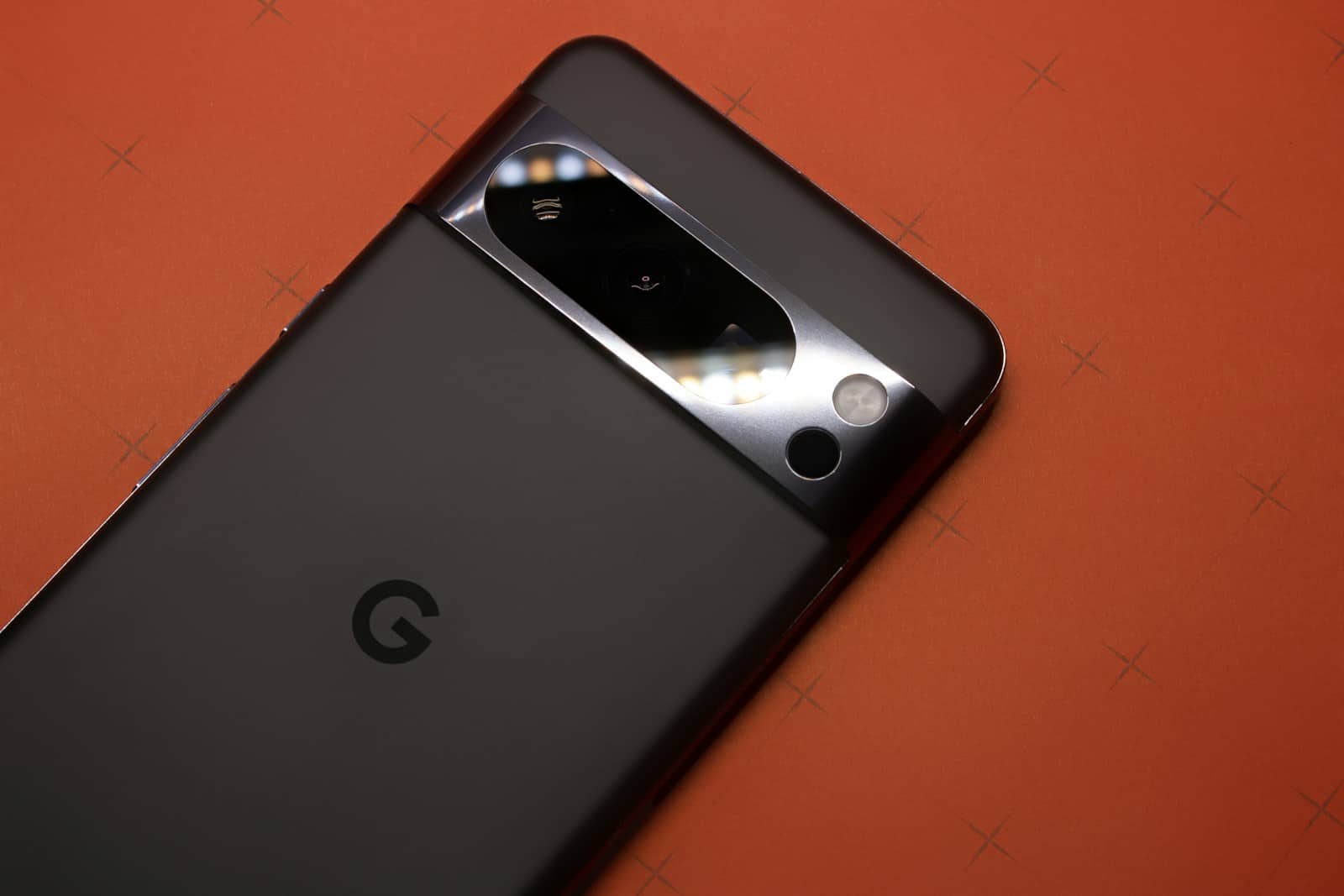The Google Pixel 6 made its official debut on October 19, 2021, with devices becoming available to consumers on October 28, 2021. This release marked a significant design shift for Google’s smartphone lineup, introducing a distinctive camera bar across the back of the phone that set it apart from previous models. The Pixel 6 launched with a starting price of $599, positioning it as a more affordable option compared to other flagship smartphones while still offering premium features.
The phone came equipped with Google’s first custom-designed chip called Tensor, moving away from the Snapdragon processors used in earlier Pixel models. This change allowed Google to enhance the device’s AI capabilities and overall performance. The Pixel 6 shipped with Android 12 and has since received updates to newer versions, with Google promising several years of software support.
Pixel 6: Specs, Release Date, and Latest Updates
The Google Pixel 6 remains a popular smartphone choice in 2025 due to its strong performance, clean Android experience, and timely updates. Here’s a comprehensive guide covering its specs, release details, and the latest software updates.
Pixel 6 Specifications
| Feature | Details |
|---|---|
| Display | 6.4-inch AMOLED, 2400 x 1080 pixels, 90Hz refresh rate |
| Processor | Google Tensor SoC |
| RAM | 8 GB |
| Storage Options | 128 GB, 256 GB |
| Rear Cameras | Dual: 50 MP wide, 12 MP ultrawide |
| Front Camera | 8 MP |
| Battery | 4,614 mAh, fast charging support |
| Operating System | Ships with Android 12, upgradable to Android 15+ |
| Connectivity | 5G, Wi-Fi 6, Bluetooth 5.2 |
| Other Features | In-display fingerprint sensor, IP68 water and dust resistance |
Release Date
- The Google Pixel 6 was officially released in October 2021.
Latest Updates (As of Late 2025)
- Google has extended the update lifecycle for the Pixel 6, with software updates continuing through October 2026.
- The Pixel 6 supports Android 15 and is eligible for preview builds of Android 16, expected in mid-2025.
- Recent Pixel Drops (monthly feature updates) include:
- Photo remixing in Google Messages
- Scam alerts in chat
- AI-powered notification summaries
- New theme packs like “Wicked: For Good”
- Personalized photo editing features
(Source: Google Pixel Drop Nov 2025)
- Monthly security and performance updates continue to be rolled out regularly.
(Source: Google Pixel Update June 2025)
Why Choose Pixel 6 in 2025?
- Modern Design: The Pixel 6’s distinctive two-tone design and camera bar remain stylish and recognizable.
- Camera Quality: Its 50 MP main sensor delivers excellent photos with Google’s computational photography.
- Timely Updates: Google’s commitment to extended software support keeps the device secure and feature-rich.
- Clean Android Experience: Stock Android with exclusive Pixel features and AI enhancements.
Summary
The Google Pixel 6, launched in October 2021, remains a competitive phone in 2025 thanks to its powerful Tensor chip, excellent cameras, and extended software support through at least October 2026. With ongoing feature updates and security patches, it’s a solid choice for Android enthusiasts.
For more details, visit:
Key Takeaways
- The Pixel 6 launched on October 28, 2021, featuring a new camera bar design and starting at $599.
- Google equipped the phone with its first custom Tensor chip, improving AI performance and breaking away from Snapdragon processors.
- The device initially ran Android 12 and continues to receive software updates as part of Google’s extended support commitment.
Details on Pixel 6 Launch
Google’s Pixel 6 marks a significant milestone in the company’s smartphone lineup with its custom Tensor chip and distinctive design. The device launched with much anticipation and brought several new features to the Pixel ecosystem.
Official Release Date and Availability
Google officially announced the Pixel 6 on October 19, 2021, during a special launch event. The phone became available for purchase on October 28, 2021, through the Google Store and major carriers across the United States.
Pre-orders opened immediately following the announcement event on October 19. This gave eager customers a chance to secure their devices before the official retail launch.
The Pixel 6 started at $599, positioning it as a competitively priced flagship option. This price point made it significantly more affordable than many competing premium smartphones on the market at the time.
Google made the Pixel 6 widely available through all major US carriers, expanding its distribution compared to previous Pixel models.
Anticipated Features and Specifications of Pixel 6
The Pixel 6 introduced Google’s first custom-designed processor, the Tensor chip. This chip was specifically optimized for Google’s AI and machine learning capabilities.
The phone featured a distinctive horizontal camera bar across the back, creating a unique and recognizable design. This marked a bold departure from previous Pixel designs.
Hardware specifications included:
- Display: 6.4-inch OLED screen
- Weight: 207g
- Thickness: 8.9mm
- Operating System: Android 12
- Storage Options: 128GB or 256GB (no expandable storage)
The Pixel 6 launched with Android 12, showcasing Google’s Material You design language with personalized color themes and improved privacy features.
Comparison with Pixel 6 Pro
The Pixel 6 Pro offered several upgrades over the standard Pixel 6, targeting users who wanted premium features. The Pro model featured a larger 6.7-inch display with higher resolution and 120Hz refresh rate compared to the Pixel 6’s 90Hz.
Camera systems differed significantly between the models. While both shared the same 50MP main camera, the Pro added a 48MP telephoto lens with 4x optical zoom capabilities that the standard Pixel 6 lacked.
The Pro model included additional premium features:
- More RAM (12GB vs 8GB)
- Larger battery capacity
- Ultra-wideband chip for precise spatial awareness
- Higher-quality front camera (11MP vs 8MP)
Despite these differences, both phones shared the same Tensor processor, ensuring similar performance in day-to-day tasks and AI features. The Pro commanded a higher price point, starting at $899 compared to the Pixel 6’s $599.
Market Impact and Consumer Expectations
The Pixel 6 release marks a significant shift in Google’s hardware strategy, with pricing and features designed to disrupt the premium smartphone market. Google aims to challenge established competitors while expanding its market presence.
Consumer Anticipation and Predicted Sales
The Pixel 6 generated substantial buzz prior to its October 28, 2021 release date. Priced at just $599, Google positioned the device significantly below comparable flagship phones from Apple and Samsung. This aggressive pricing strategy was designed to attract budget-conscious consumers looking for premium features.
Despite strong consumer interest, analysts noted that Google faced an uphill battle in gaining meaningful market share. The limited availability of Pixel devices worldwide remains a significant hurdle for Google’s hardware ambitions.
Pre-order opportunities were made available through multiple channels including Amazon, Google’s own store, B&H, and Best Buy, indicating Google’s push for wider retail presence.
Potential Influence on the Mobile Market
The Pixel 6 represented Google’s most serious attempt to date at disrupting the premium smartphone market. With its custom-designed Tensor chip and competitive pricing, the device challenged the notion that flagship phones must cost $1,000 or more.
Industry watchers from Yahoo and other outlets noted that Google’s approach could potentially influence pricing strategies from other manufacturers. The combination of premium design and mid-range pricing created a new competitive segment.
The limited global availability, however, restricted the Pixel 6’s market impact. Unlike the strategies anticipated for future devices like the Pixel 9 and 9a series, the Pixel 6 rollout targeted select markets rather than pursuing global distribution.
Many experts believe the Pixel 6 served as a testing ground for Google’s hardware division, helping shape expansion plans for subsequent generations.
Frequently Asked Questions
The Google Pixel 6 marked a significant design shift for Google’s smartphone lineup and brought several important updates to the Android ecosystem. Users often have questions about its specifications, features, and support timeline.
What are the specifications for the Google Pixel 6?
The Google Pixel 6 features Google’s first custom-designed processor, the Google Tensor chip. This processor was specifically engineered to enhance AI and machine learning capabilities.
The device comes with a 6.4-inch OLED display with a 90Hz refresh rate. It offers 8GB of RAM and storage options of 128GB or 256GB.
For photography enthusiasts, the Pixel 6 includes a dual rear camera system with a 50MP main sensor and a 12MP ultrawide lens. The front camera is 8MP for selfies and video calls.
What new features are included in the Pixel 6 and Pixel 6 Pro?
The Pixel 6 series introduced a completely redesigned camera bar that spans the width of the phone. This distinctive design element houses improved camera hardware for better photography.
Google’s Tensor chip enables advanced features like Magic Eraser, which lets users remove unwanted objects from photos. The chip also powers improved voice recognition and real-time translation capabilities.
The devices shipped with Android 12, featuring the new Material You design language that customizes the interface based on your wallpaper. Enhanced security features include the Titan M2 security chip.
How does the Pixel 6 compare to the Pixel 6 Pro in terms of performance and functionality?
Both phones share the same Google Tensor processor, but the Pixel 6 Pro offers 12GB of RAM compared to the Pixel 6’s 8GB. This provides slightly better performance for demanding applications and multitasking.
The Pro model features a larger 6.7-inch display with a higher 120Hz refresh rate versus the standard model’s 90Hz. The Pro also adds a 48MP telephoto lens with 4x optical zoom that the regular Pixel 6 lacks.
Battery capacity is another difference, with the Pro having a 5,003mAh battery while the standard Pixel 6 has a 4,614mAh battery. The Pro also offers an additional storage option of 512GB.
What are the pricing details for the Google Pixel 6 series?
The Google Pixel 6 launched with a starting price of $599 for the 128GB model. This positioned it as a competitively priced flagship alternative.
The Pixel 6 Pro started at $899 for the 128GB version. The higher price reflected its premium features like the additional telephoto camera, larger display, and increased RAM.
Both models represented a significant value proposition compared to other flagship smartphones at the time of release, especially considering the custom processor and camera capabilities.
What is the anticipated lifespan of the Pixel 6?
According to the search results, the Pixel 6 will receive Android version updates until at least October 2024. This means Android 15 will be the last major OS update for the device.
Security updates will continue until at least October 2026, providing two additional years of security maintenance. This ensures the phone remains protected against vulnerabilities.
Recent information suggests Google may have extended the update timeline, with some sources indicating the Pixel 6 series will now receive five years of both Android and security updates instead of the originally announced three years of OS and five years of security updates.
When was the Google Pixel 7 released?
The Google Pixel 7 was released in October 2022, approximately one year after the launch of the Pixel 6 series. It continued the design language established by the Pixel 6 with the distinctive camera bar.
The Pixel 7 featured the second-generation Google Tensor G2 chip, which offered improvements in performance and efficiency over the original Tensor processor in the Pixel 6.
Like its predecessor, the Pixel 7 launched alongside a Pro variant that offered premium features and improved specifications for users wanting a more capable device.







